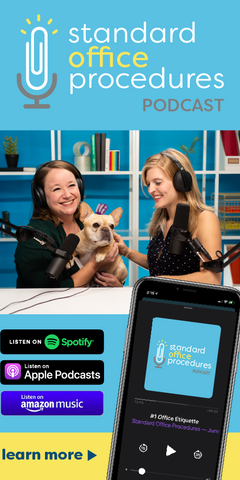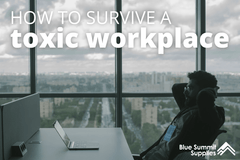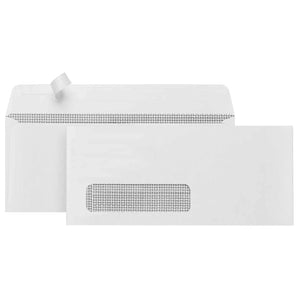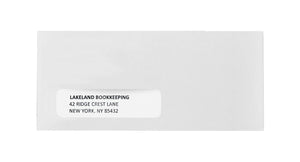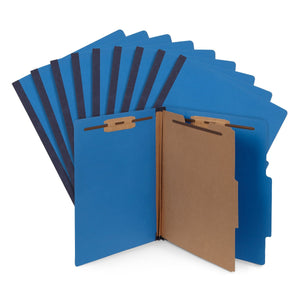Investing in high-quality eCommerce product photography is more than just a good idea – it’s a necessity. 93% of consumers consider visual appearance to be the key deciding factor in a purchasing decision. Higher quality photos lead to more sales, which means more money in your pocket.
But how to get high-quality product photos?
In this guide, we’ll teach you the simple tips and tricks to getting the best eCommerce product photography.
Ecommerce Product Photography Basics
Hiring an expert to take your product photos is ideal, since a professional photographer can more than pay for herself through increased sales. However, for smaller businesses or those just starting out, paying the price tag for a professional isn’t always practical.
Luckily, taking quality photographs of products doesn’t have to be complicated.
To capture a good product photo, you’ll need a camera, a tripod, a table, a good background, and lights.
Let’s break down the setup.
Best Digital Camera for Product Photography
To get professional-looking product photos without the professional, we recommend investing in a DSLR camera.
DSLR cameras have more settings than other kinds of cameras. You can adjust the ISO, aperture, and shutter speed. You also can swap out different lenses depending on your needs. Since DSLR cameras typically have higher megapixels, photos also have a better resolution and look clearer.
DSLR Cameras

Nikon D7200— starts at $896.95
With this camera, your images will look bright and crisp. It can shoot in almost any lighting, and it has built-in WiFi and NFC, so you can easily connect the camera to your phone or tablet. It’s also great if you want to shoot videos of your products because it has 4K Ultra HD video capabilities.

Nikon D3500— $439
If you’re a beginner, you may want to start with a DSLR with fewer bells and whistles. This camera still has the capability to shoot in manual so you can make fine adjustments. However, its auto mode is perfect for beginners. This kit is great because it comes with lenses, a tripod, and other photo accessories.
What lens for product photography?
A key part of getting great shots in a DSLR is your lens. To shoot up-close details, we recommend a macro lens. For all other photos of your products, a 50mm length lens will do.
If a DSLR camera is out of your budget, point-and-shoot cameras and phone cameras can suffice with the right photoshoot setup and editing.
Point and Shoot Cameras

Canon PowerShot IXUS 185 / Elph 180— $104.95
If you’re looking for a cheap camera for product photography, then you want this camera. This is going to be the best point and shoot camera for product photography you can buy. This camera is light, easy to use, and can take quality photos.

Nikon Coolpix A1000— $256.95
We keep recommending Nikon because they make quality cameras. This one has an impressive zoom function, 18 scene modes, and other features to produce a quality image at a more affordable price.
Best Tripod for Product Photography
It’s impossible to keep your hands perfectly steady while taking photos, so we suggest stabilizing your camera on a tripod.
Here are some of our favorites.

ZOMEi 75'' Tripod— $149.96
A versatile tripod is the best choice for product photography, and this one swivels side-to-side as well as up and down. It’s lightweight, making it easy to transport, and has legs that can be individually adjusted to different angles.

Mactrem PT55— $37.99
This tripod is budget-friendly and effective. It only weighs 2.75 pounds, so it’s easy to transport. Its adjustable legs and rubber feet make it versatile for any shooting surface, even uneven or slippery ones.

Hitch Phone Tripod— $22.99
If you’re shooting with a smartphone, you’ll need a tripod made especially for it. This tripod is inexpensive and comes with a Bluetooth remote control.
Alright, so we’ve got the camera, we’ve got the tripod. Next up: lighting.
Product Photography Lighting Options
If you’re lucky, you can place your setup near a large window with natural sunlight. However, the weather isn’t always agreeable, so it’s good to have studio lights as a backup. Below are some light options.
Light Kit
Using a light kit is an effective way to make your photos look professional. Have a light on either side of your product and angle them toward it to completely cover the item in light. If shadows are too intense, use a third light in the back to get rid of them. Choose a light kit that comes with lightbulbs, umbrellas, a case, light stands, and bulb sockets.
Here are a couple light kits we recommend:

LimoStudio Lighting Kit — $63.90
Ring Light
To keep things simple, use a ring light. All you need to do is place the light directly in front of your product and it will diffuse it with a soft, even light. To make the light softer, increase the distance between the light and the subject.
Here are a few good ring lights:

Diva Ring Light— $249

Neewer Ring Light — $129.99
Photo Studio Box
A photo studio box is ideal for small products. It includes your light source and your background. To use it you turn it on, place your object inside, put your camera directly in front of it, and start shooting.
We recommend these studio boxes:

Havox Photo Studio— $199.99

SAMTIAN Photo Light Box— $79.99
All in One Place
Don’t want to bother with ordering supplies piecemeal? We recommend this kit for the entire set up. It includes three color backdrops, lights, and light accessories. Grabbing a pre-packaged kit like this one makes it straightforward to create your own mini studio.

Now that we’ve gotten all the gear, it’s time to set up a background for product photos. White is standard for a product photography background because it’s clean, simple, and makes your products stand out.
White Background Product Photography
You have a few options when shooting product photography on a white background.
If you have photoshop, lay white paper flat on the table and secure white paper to the wall behind your product. This makes it simple to photoshop the line out of the photos.
If you want to avoid extra photoshopping, shoot on what’s called a ‘continuous background.
What is a Continuous Background?
To create a continuous background for your product shots, you’ll need a roll of craft paper, some clamps, and a frame to attach the paper to.
- Cut a long piece of paper to cover the frame and the surface your product will be resting on. Make sure it fits with some room to spare.
- Attach the top of your paper to the frame with the clamps. Make sure the paper is completely smooth with no instances of buckling. This will help you avoid shadows.
- After clamping it up top, adjust the paper to where it rests smoothly along the surface and clamp the bottom.
- Place your product on your paper to make sure it fits, and voila! You have a smooth, white surface to use as your product backdrop.

While white is the standard for product photography backgrounds, feel free to experiment with different backdrops to emulate a countertop or textured surface. For example, this marble backgroundis great if you’re aiming for trendy. Plus, this replica background is lightweight, easy to move, and much more affordable than a real marble countertop
The key is to use something that complements your product and emphasizes its features.
Other Product Photography Background Ideas
Try making your background yourself. This project is best for flat lay photography. Here’s what you need:
- Contact paper (remember, nothing with busy patterns)
- Sturdy board (MDF board, plywood, or foam board will work)
- Craft knife
- Scissors
Here are the simple steps:
- Cut your board to your desired size. Remember, you need ample space around your entire product.
- Use scissors to cut your contact paper to size. Make sure to cut it a little bit larger than your board.
- Line the contact paper up with your board to make sure it’s even.
- Slowly peel back the paper off the adhesive and smooth it to your board. Smooth it as you go to ensure there are no wrinkles or bubbles.
- Use a craft knife to cut off the paper hanging over the edges.
Another cheap option is to purchase large poster boards and fashion them together with tape to make your background. Then, edit out any lines in post-production.
For a flat lay, you could use thin fabric, like bedsheets. Make sure to iron them beforehand for a crisp-looking background.
Taking Your Product Photos
Now that your setup is ready, it’s time to start shooting.
To make products really stand out, use a wide aperture while shooting to create a narrow depth of field.
Aperture 101
The aperture refers to the opening of your lens’ diaphragm where light passes through. It’s measured by f/stops and, as a general rule of thumb, the larger the number, the smaller the hole which allows for less light to pass through and the smaller the number, the bigger the hole which allows more light to pass through. You’ll want to set it to a small number f/stop like f/2.
Consumers want to see a product from different angles to get a real idea of what it looks like. Make sure to get shots of your product from all angles as well as shots of it at a distance so you can see the entirety of it. Detail shots are imperative, too, so be sure to zoom in and get clear images of product details.
Remmeber, depending on what angle you shoot from, you will need to adjust your lights accordingly to avoid heavy shadows.
iPhone Product Photography
Sometimes you’ve got to make do with the tools you have. Luckily, there are ways to make phone photography look as good as the pros.

How to Take Amazon Product Photos
If you’re taking product photos for an Amazon listing, there is a specific and stringent set of guidelines you must follow. We’ve come to know these guidelines intimately well through a series of trial and error, and we want you to learn from our successes… and mistakes.

Technical Requirements
- Your photos need to be in either TIFF (.tif/.tiff), JPEG (.jpeg/.jpg), GIF (.gif), or PNG (.png) format.
- They prefer image pixel dimensions of 1000 or larger in either height or width.
- Your file names need to have the product identifier followed by a period with the file format (ex. 0918339304.tif). Spaces, dashes, or additional characters are prohibited.
- Photos need to be in sRGB or CMYK color mode.
Image Standards for Main Image
- Keep images simple, with only the product for sale in them.
- The photos need to be in focus and well-lit.
- No fancy editing; the photo needs to accurately show the product. Do not change the colors or add filters.
- Products must fill 85% of the frame. The full product needs to be in the frame.
- Backgrounds must be pure white (RGB 255, 255, 255) so avoid patterned backgrounds.
- No illustrations, additional graphics, or text allowed.
- If your product is a book, music, or video/DVD, the image must be of the cover art and fill 100% of the image’s frame. No wrapping or promotional stickers allowed.
Additional Photos
- Must be of or pertaining to the product.
- Must be well-lit and in focus.
- The same editing rules above apply.
- You can include other products to help demonstrate the use or scale of your product.
- Close-up and cropped images are allowed.
- You can use non-white backgrounds and other settings.
- You can include text and demonstrative graphics.
Ecommerce Product Photography Services
Feeling overwhelmed? Don’t want to invest in the equipment? Then you may want to use an eCommerce Product Photography service.
- Squareshot is a company that can both shoot your photos and edit them. They shoot photos that fit Shopify and Amazon standards and customize your angles and layout as well as your image size and file format.
- Pencil One is a similar company. They have extensive knowledge of lighting and editing and pay close attention to detail.
- Or find a local product photographer near you. We found our beloved product photographer Amy of Storefront Studios and our website (and sales) improved drastically. Investing in talent and skill is rarely a bad idea!

Producing professional-looking product photos takes time and effort, but it’s worth it when you see your sales increasing. By following these tips, you can also list your products on other websites like Amazon and eBay.
Get started with some of our more affordable options and as your sales increase, consider investing in professional photography services to grow your brand. Trust us, if we can do it, so can you.
If you have any questions or comments, leave them below! We love to hear from you. And stay in the know by following us on Twitter, Instagram, and Facebook. Or send us an email– Larry always loves to hear from you.
 For more informative articles about office supplies, subscribe to our email newsletter!
For more informative articles about office supplies, subscribe to our email newsletter!
Never fear, you won't begin receiving daily sales emails that belong in a spam folder. Instead, we promise a fun weekly roundup of our latest blog posts and great finds from across the web. And if you lose interest, it's always easy to unsubscribe with a single click.




